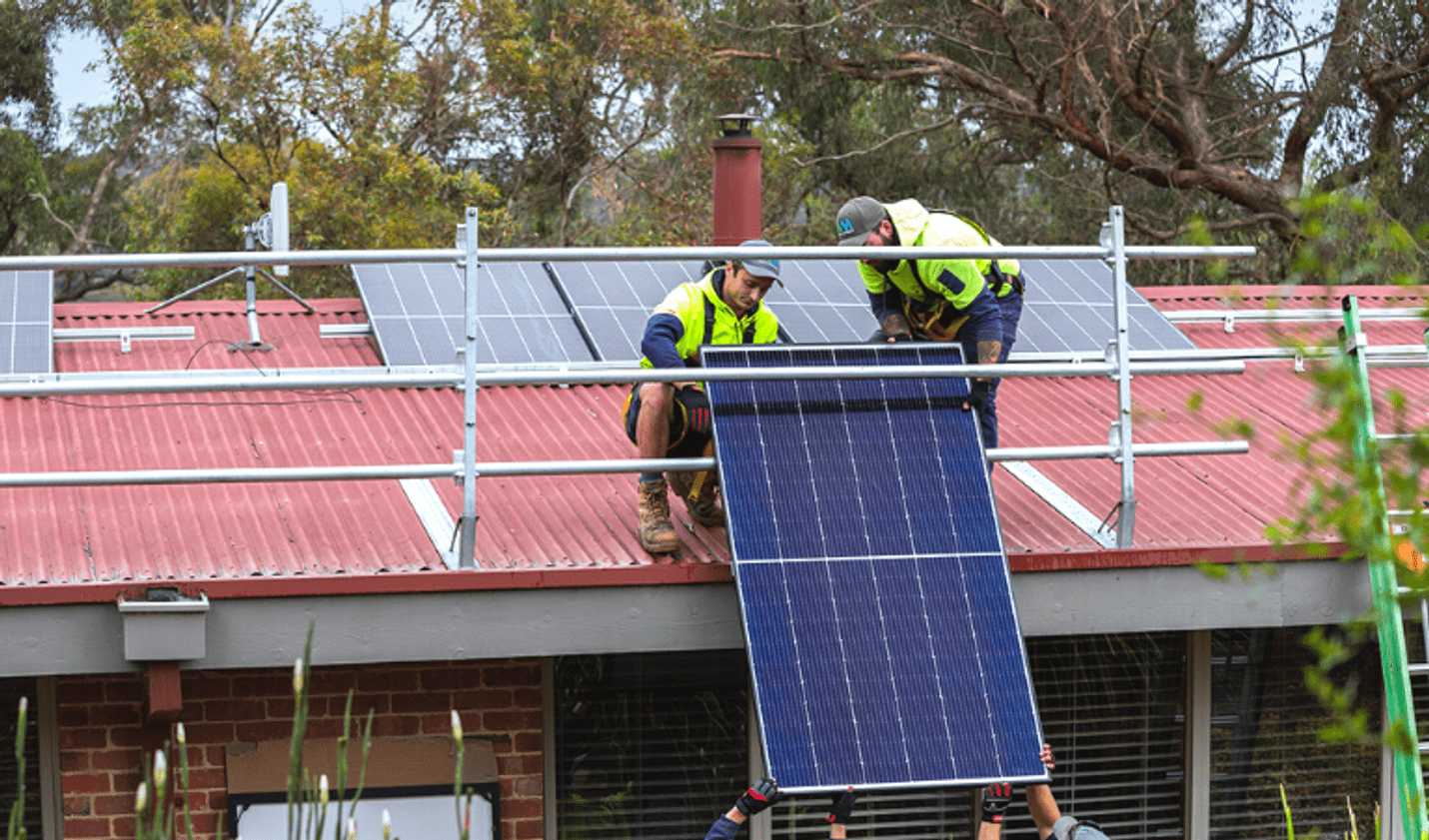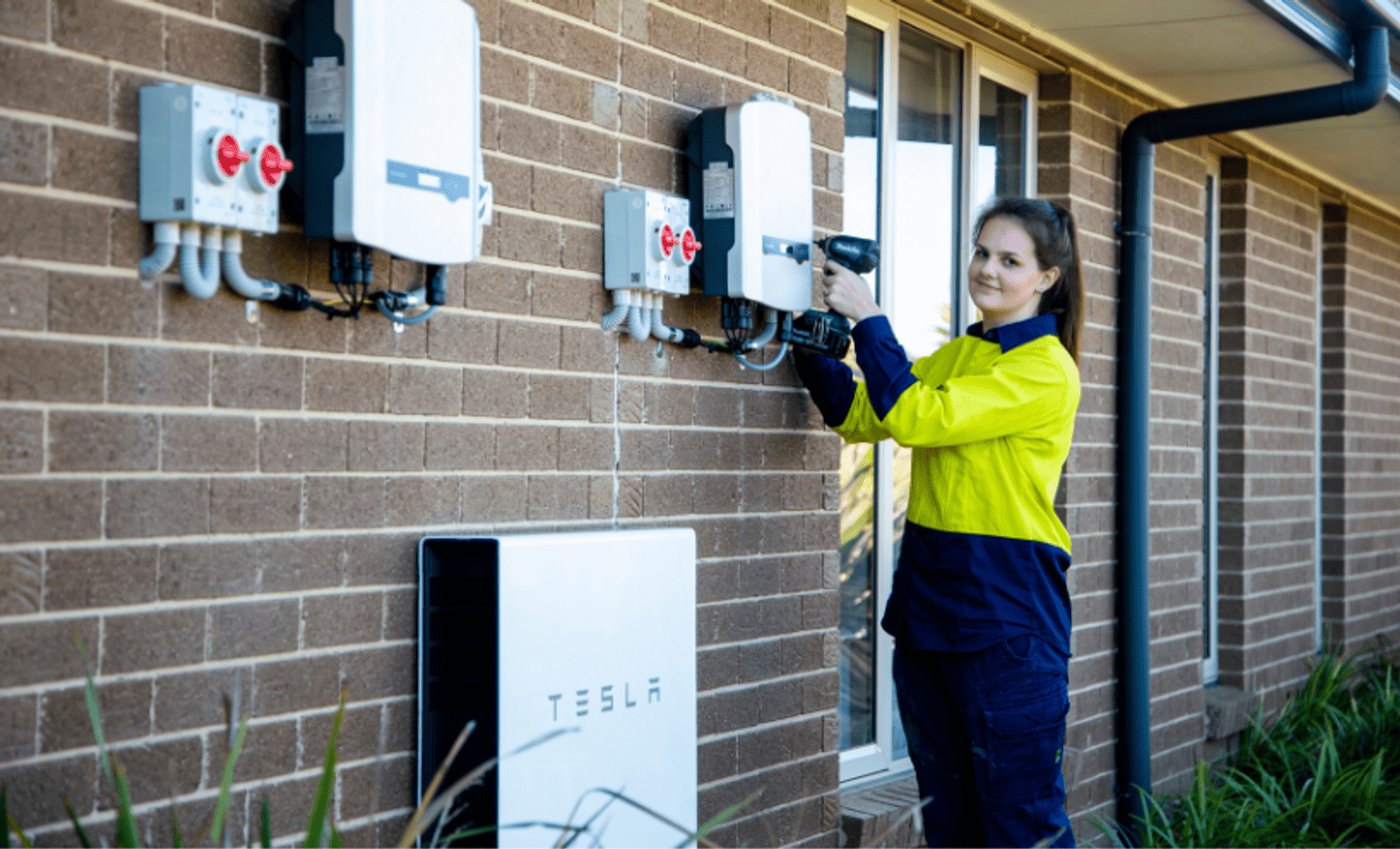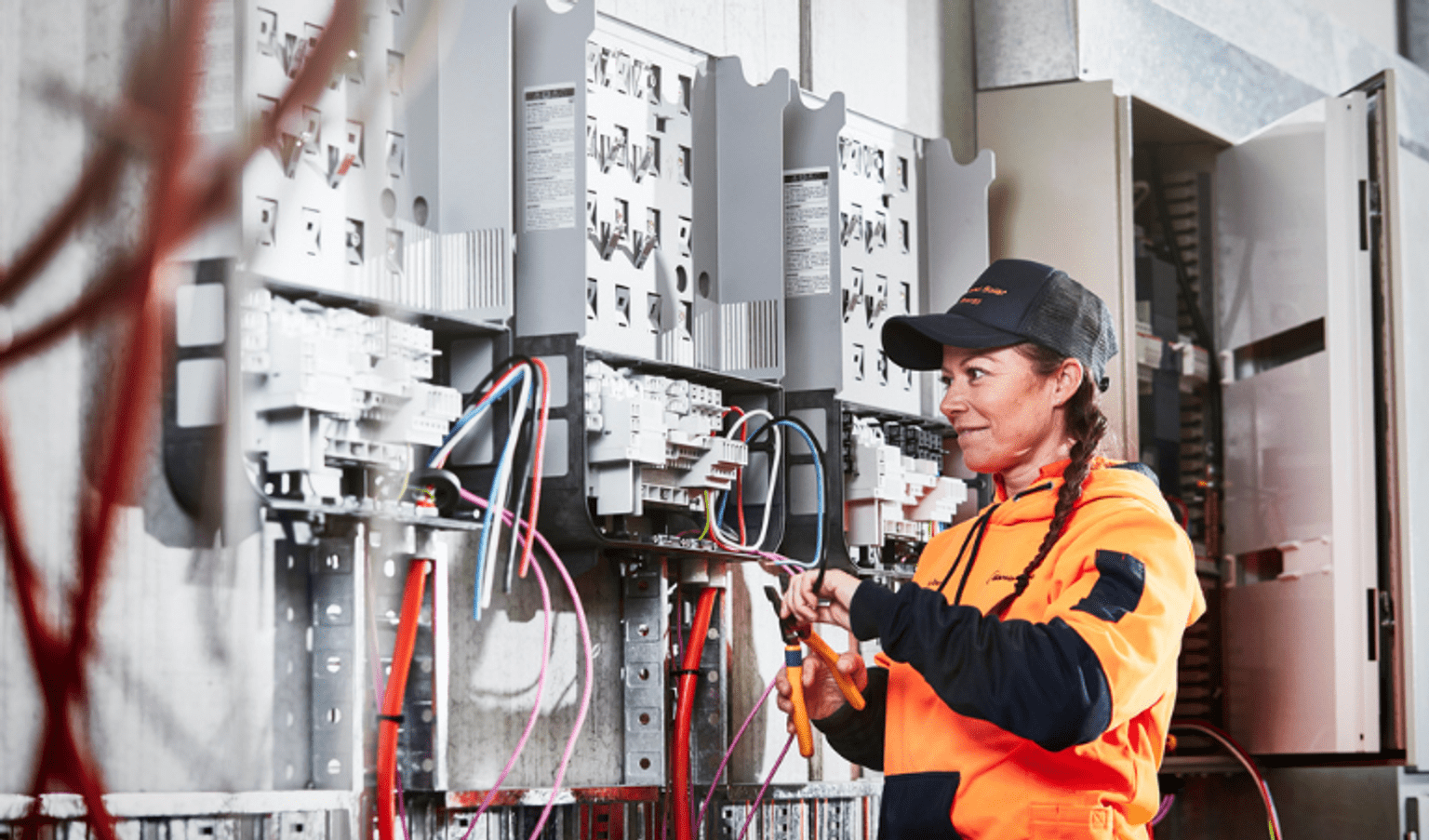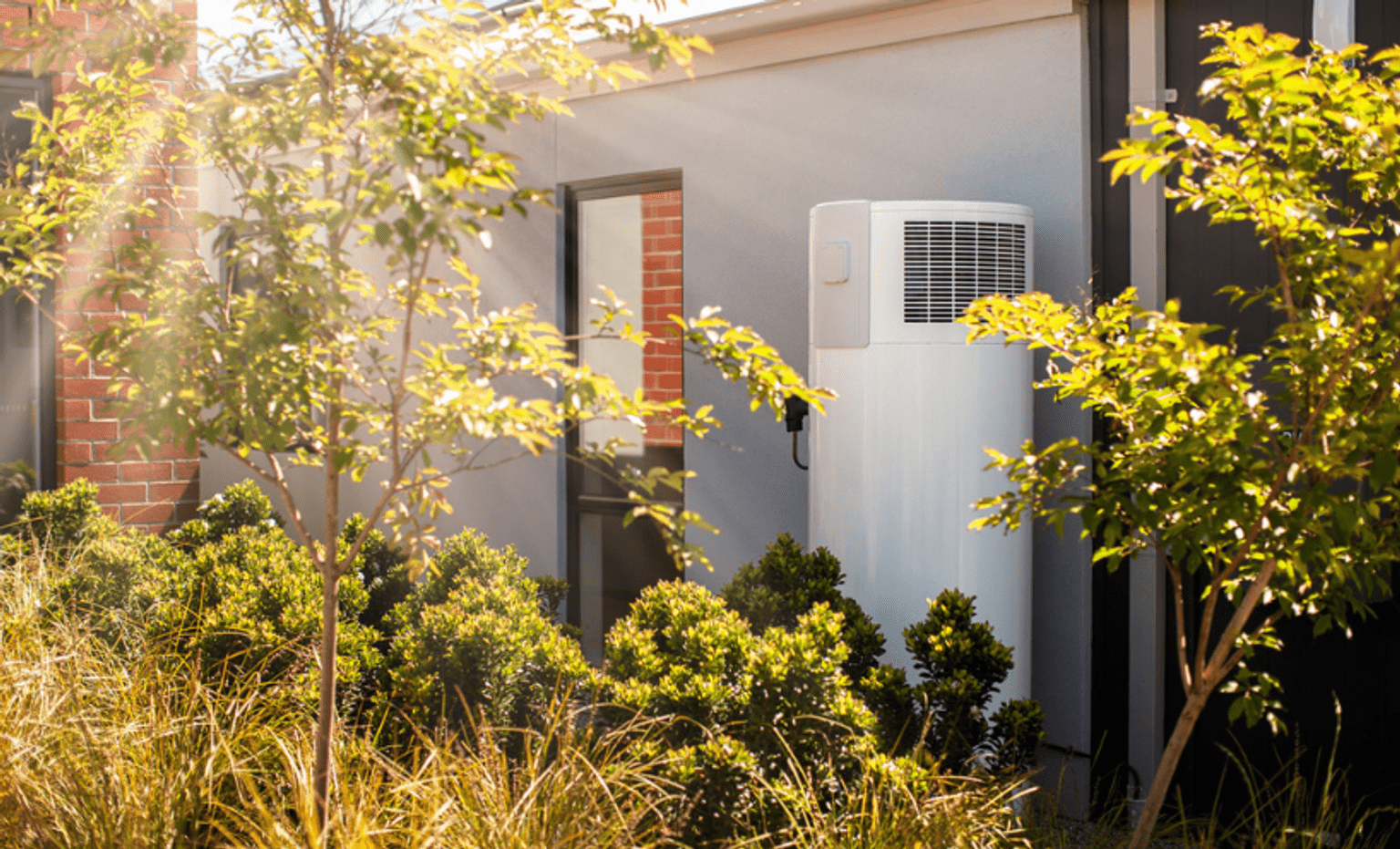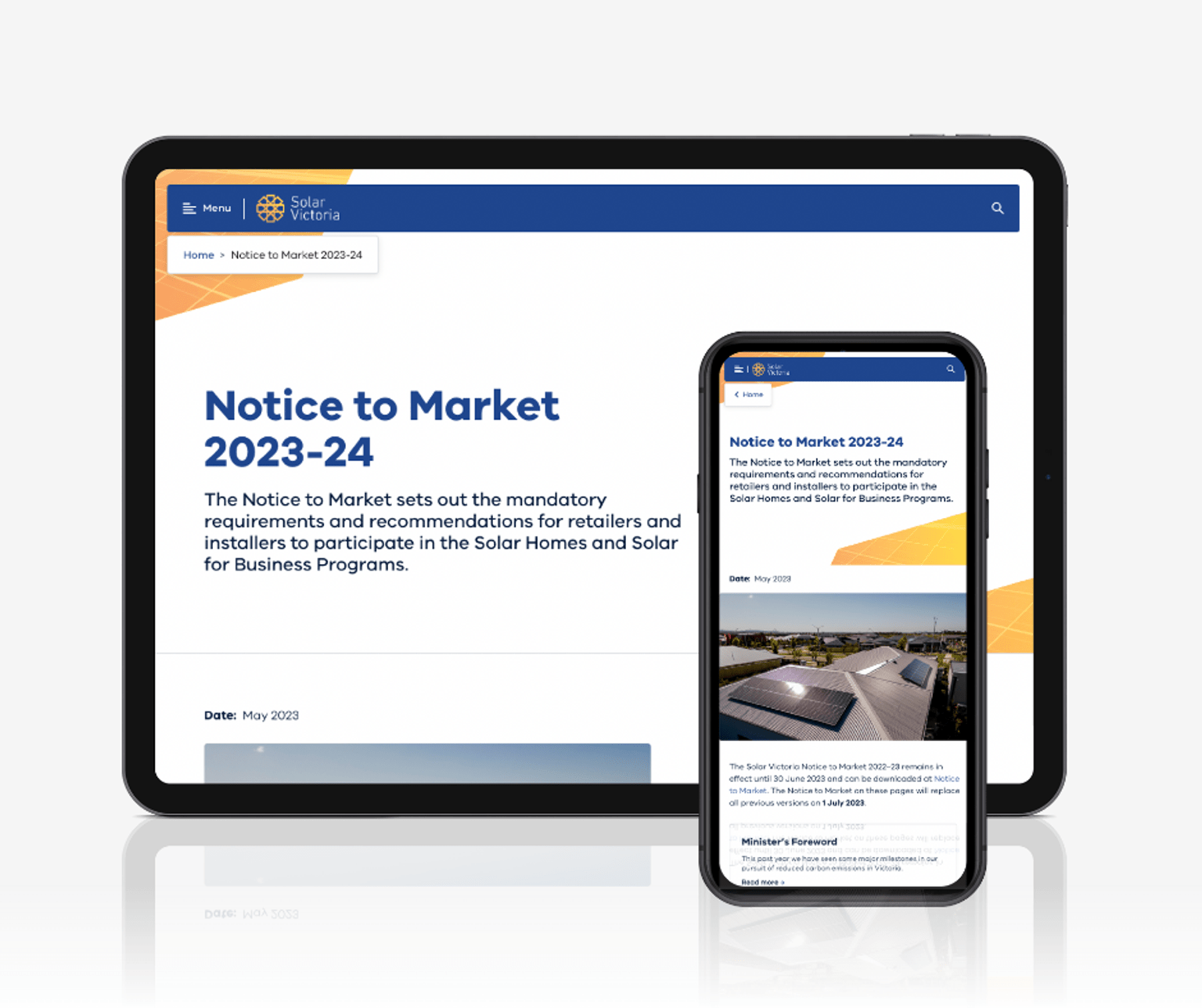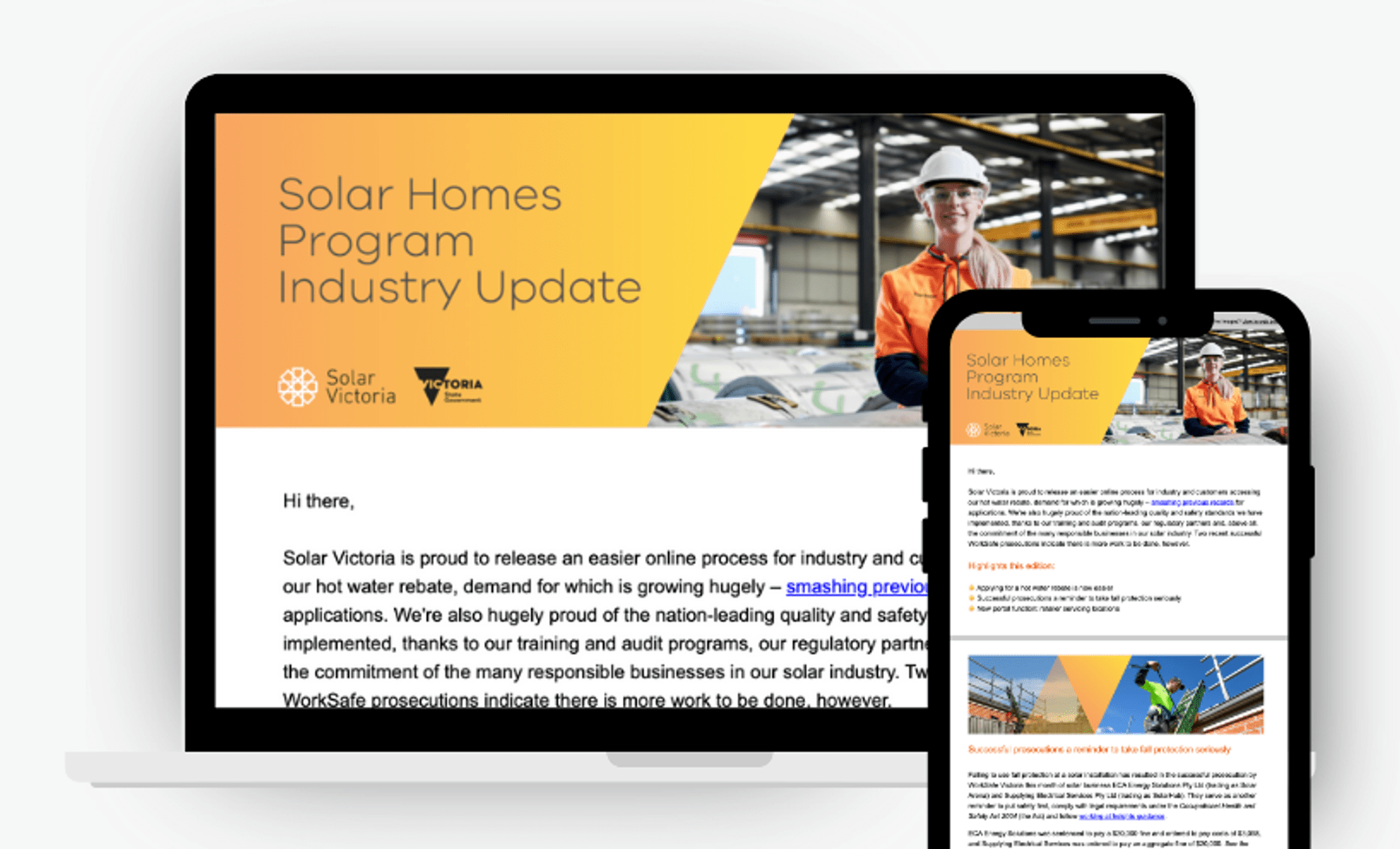This guidance complements information in our Notice to Market.
Use this guidance and our solar PV audit checklists, battery audit checklist and hot water audit checklist to ensure installations under our program are compliant and meet the high standards we have set.
Legislation and regulations
Commonly identified legislation and regulations within the solar industry include:
- Victorian Occupational Health and Safety Act
- Electricity Safety Act
- Occupational Health and Safety Regulations
- Electricity Safety (General) Regulations
A full list of legislation and regulations related to the solar industry is listed on the Energy Safe Victoria and WorkSafe Victoria websites.
Compliance codes and codes of practice also play an important role. They explain your duties or obligations under legislation in practical ways that are aimed to help you comply.
See WorkSafe compliance codes and codes of practice and ESV electrical technical guidelines and determinations.
Australian Standards
Solar Homes installers must adhere to current and relevant standards for the design and installation of solar and battery storage systems.
These are made mandatory through:
- legislation and/or regulations; and/or
- normative reference from a mandated standard (commonly AS/NZS 3000 – Wiring Rules); and
- are required by our Notice to Market
Penalties for failing to meet Australian Standards vary. We may suspend or cancel an installer or retailer from its programs for non-compliance.
Commonly identified AS/NZS Standards within the solar industry include, but are not limited to:
| AS/NZS 1170 Series | Structural Design Actions(All parts) |
|---|---|
| AS 1768 | Lightning Protection |
| AS/NZS 3000 | Electrical Installations (known as Wiring Rules) |
| AS/NZS 4509 Series | Stand-alone power systems
|
| AS/NZS 4777 Series | Grid Connections of Energy Systems via Inverters
|
| AS/NZS 5033 | Installation of photovoltaic (PV) arrays |
| AS/NZS 5139 | Electrical installations – Safety of battery systems for use with power conversion equipment |
Guidance
Industry guidance informs retailers and installers of leading practice. It may be voluntary in nature or made mandatory through our Notice to Market.
Energy Safe Victoria, WorkSafe Victoria and Solar Victoria develop guidance to inform installers and retailers of non-compliances found within installations.
The following guidance is available on the Energy Safe Victoria website:
- How to ensure you have a compliant PV installation.
- Working safely when installing photovoltaic (PV) systems.
- Identifying mismatched d.c. connectors in PV installations
- Solar for Apartments industry guidance
- Clean Energy Council advice on repairs and alterations
- Grid connected inverter requirements from 18 December 2021.
Also see:
- PV d.c. isolators and systems for guidance in addition to the requirements of AS/NZS 3000, AS/NZS 5033 and all other applicable standards.
- EIS 004: Battery Installation – Neutral continuity and MEN Connection for guidance on eliminating the risk of electric shock relating to battery system installations providing backup power in the event of a grid outage.
- EIS 008: Multi Mode Inverters – RCD protection requirements for guidance on what to do if any circuits have been altered to be backed up by the MMI installation, or if there are no RCDs on the existing non-backed-up circuits.
For guidance to help the solar industry understand and meet the requirements of the new emergency backstop mechanism, go to emergency backstop guidance for installers.
Technical solution and guidance sheets
Series 1: Working safely at height
Use this series developed in collaboration with WorkSafe Victoria to plan safe systems of work while installing photovoltaic systems.
Risks increase when you are working at height, and particularly on multi-level buildings eligible through our Solar for Apartments Program. Different equipment may be used to control risk in these scenarios.
To ensure you eliminate the risk of working at height with appropriate controls in every scenario, please follow the guidance below alongside information on the WorkSafe Victoria website.
Series 2: Battery installation safety
Series 3: Solar PV installation safety
Developed by Grey Sky Solar Consulting, and reviewed by Energy Safe Victoria, to support installers’ understanding of applicable requirements in:
• AS/NZS 3000:2018 Electrical installations “Wiring Rules”
• AS/NZS 4777.1:2016 Grid connection of energy systems via inverters Part 1: Installation requirements
• AS/NZS 5033:2021 Installation and safety requirements for photovoltaic (PV) arrays
Series 4: Hot water installation safety
Developed by TechSafe Australia, and reviewed by the Victorian Building Authority, to support installers’ understanding of the safe drainage of temperature pressure relief valves in reference to these standards, codes and regulations:
• Plumbing Regulations 2018
• National Construction Code volume 3
• Plumbing Code of Australia
• AS/NZS 3500.2:2021 Plumbing and Drainage Part 2: Sanitary Plumbing and Drainage
• AS/NZS 3500.4:2021 Plumbing and Drainage Part 4: Heated Water Services
Series 5: Managing electrical risk
Use this series developed in collaboration with Energy Safe Victoria and TechSafe Australia to plan safe ways of working with electrical risk while installing solar systems.
Solar industry links
Electrical Regulatory Authorities Council provides resources and publications about electrical products, installations and solar/small scale generation resources.
WorkSafe Victoria provides guidance and assistance to ensure all employers and employees have a safe workplace in the electrical and solar industry. See electrical and roofing guidance.
Updated

